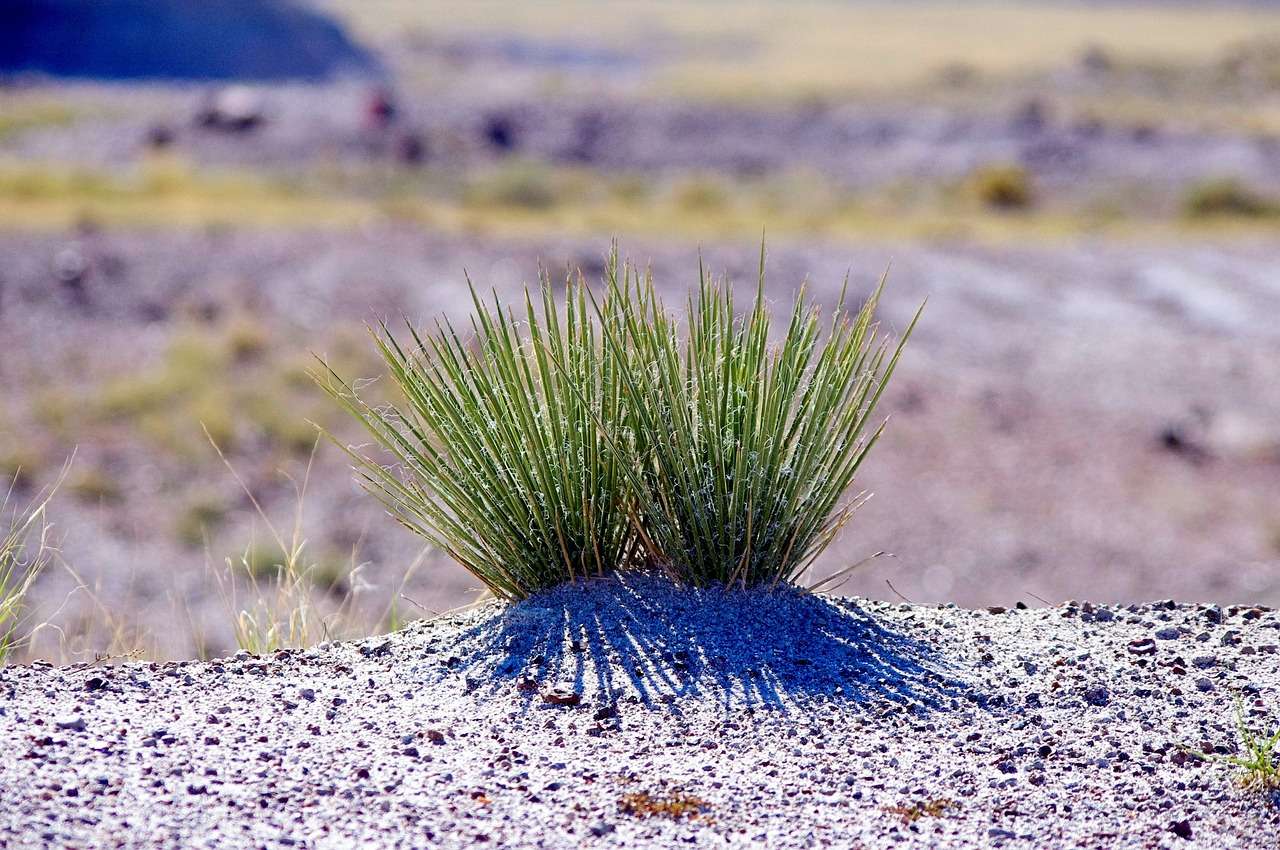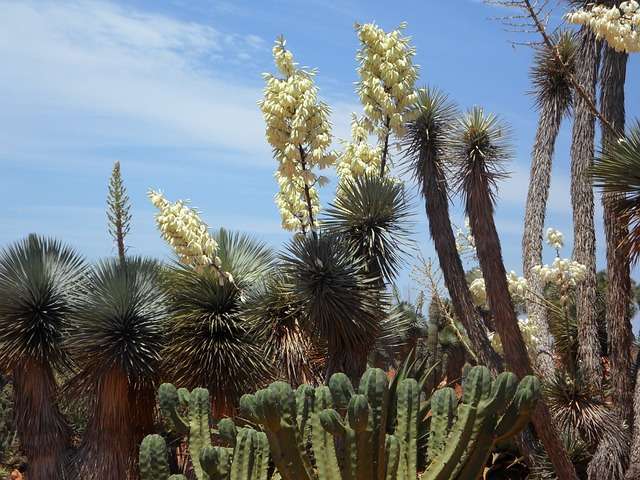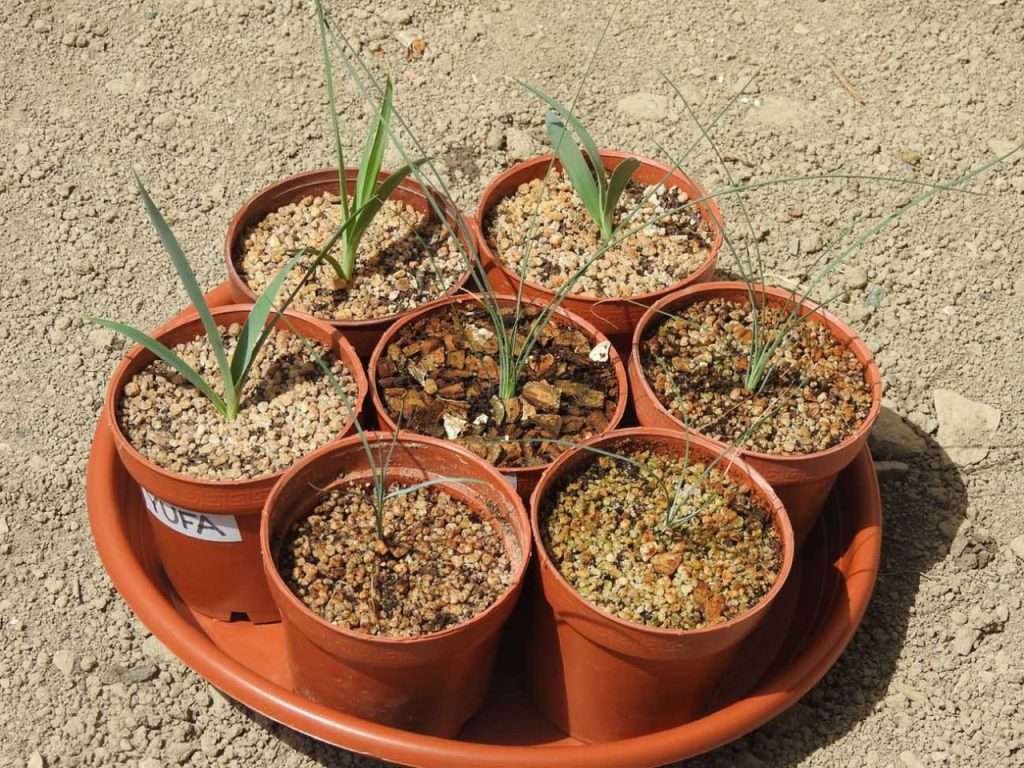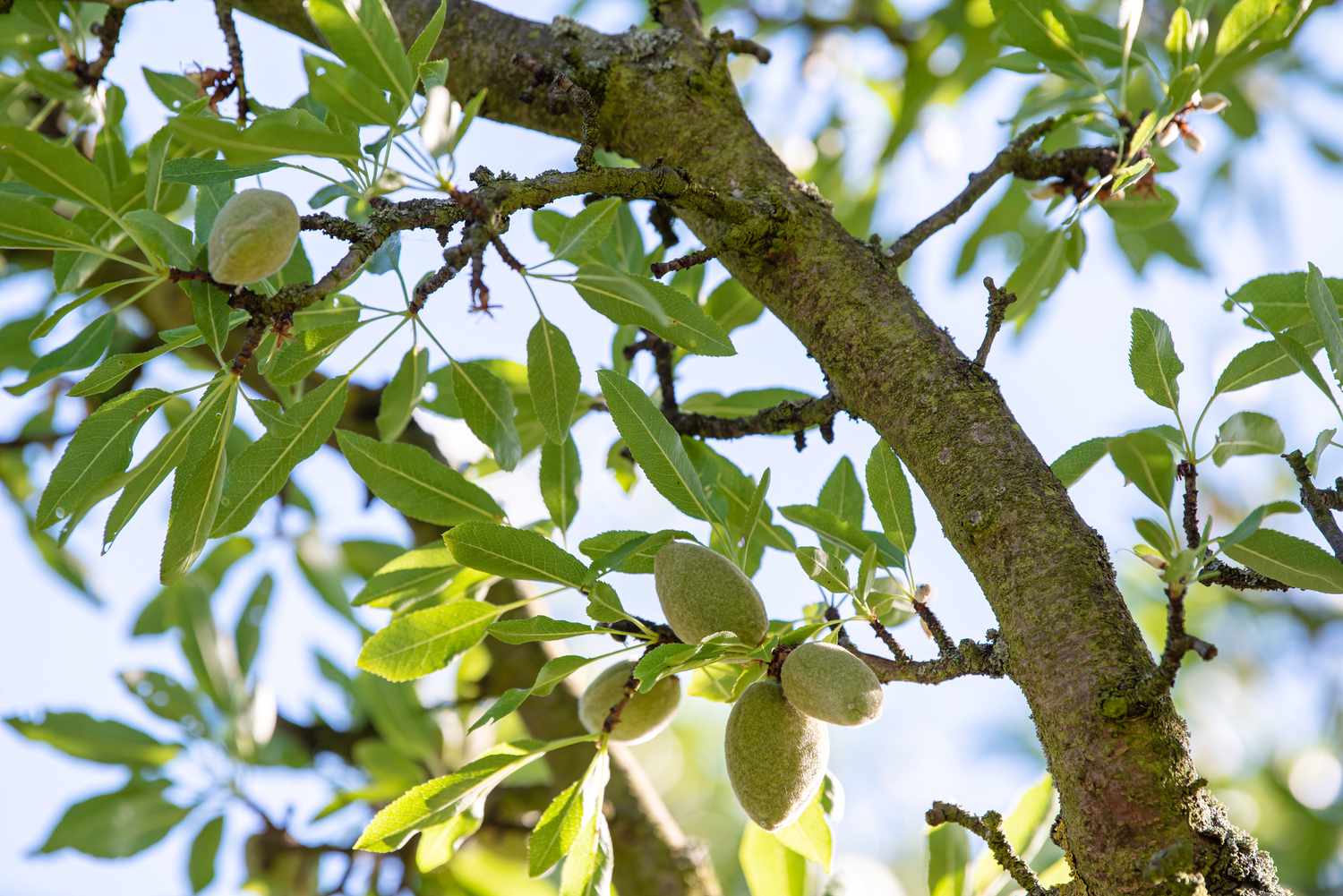How to Grow And Care for Yucca Plant: Expert Tips & Tricks

To grow and care for a Yucca plant, provide well-draining soil and bright, indirect sunlight. Water sparingly to avoid root rot.
Yucca plants are versatile, hardy, and easy to maintain, making them popular among indoor and outdoor gardeners. Originating from arid regions, these plants thrive in dry conditions and require minimal watering. Their striking, sword-like leaves and towering flower spikes add a dramatic flair to any space.
Proper care involves placing them in a bright location with indirect sunlight and using well-draining soil. Overwatering can lead to root rot, so it’s crucial to let the soil dry out between waterings. Regularly dust the leaves to keep them clean and free from pests. With minimal effort, your Yucca plant can thrive and enhance your home.
Introduction To Yucca Plants
The Yucca plant is a striking addition to any garden or home. These hardy plants are known for their sword-like leaves and tall flower spikes. They add a touch of the desert to any landscape.
Origins And Varieties
The Yucca plant originates from the arid regions of the Americas. You can find them in deserts, plains, and coastal dunes. There are over 40 different varieties of Yucca plants.
| Variety | Features |
|---|---|
| Yucca Filamentosa | Known as Adam’s Needle, it has white flowers. |
| Yucca Gloriosa | Also called Spanish Dagger, it has sharp leaves. |
| Yucca Elephantipes | Known as Spineless Yucca, it has softer leaves. |
Benefits Of Growing Yucca
Growing a Yucca plant brings many benefits. These plants are low-maintenance and drought-tolerant. They require very little water.
- Yucca plants improve air quality.
- They are resistant to pests and diseases.
- Yucca plants add visual interest to your garden.
- They can live for many years with minimal care.
With their unique appearance and easy care, Yucca plants are a great choice for any garden. They bring beauty and resilience to your space.

Choosing The Right Yucca
Choosing the right Yucca plant is crucial for your garden or home. Yuccas come in various species, each with unique needs and characteristics. Understanding these differences will help you select the perfect Yucca for your space.
Popular Species
There are several popular species of Yucca to consider. Here are a few:
- Yucca filamentosa: Known as Adam’s Needle, this species has striking, sword-like leaves.
- Yucca aloifolia: Also called Spanish Bayonet, it features sharp, pointed leaves.
- Yucca elephantipes: Known as Spineless Yucca, it is ideal for homes due to its soft leaves.
Indoor Vs Outdoor Varieties
Yucca plants can thrive both indoors and outdoors. Here’s a quick comparison:
| Indoor Varieties | Outdoor Varieties |
|---|---|
| Yucca elephantipes | Yucca filamentosa |
| Yucca guatemalensis | Yucca aloifolia |
Indoor Yucca plants prefer bright, indirect light. They need less water than outdoor varieties. Outdoor Yucca plants thrive in full sunlight. They need well-drained soil to prevent root rot.
By selecting the right species and understanding their needs, you can enjoy a thriving Yucca plant in your home or garden.

Planting Yucca
The Yucca plant is a hardy and attractive option for any garden. Proper planting ensures it thrives for many years. Let’s explore the best methods for planting yucca.
Ideal Soil Conditions
Yucca plants prefer well-draining soil. This prevents root rot and other issues. The soil should be sandy or gravelly. A mix of sand and garden soil works well.
| Soil Type | Drainage |
|---|---|
| Sandy Soil | Excellent |
| Gravelly Soil | Very Good |
| Clay Soil (with sand mix) | Improved |
Ensure the soil is not too rich. Yucca plants thrive in nutrient-poor conditions. Over-fertilizing can harm them.
Planting Techniques
Planting yucca involves a few simple steps:
- Choose a sunny location. Yucca plants need full sun to grow well.
- Dig a hole twice the size of the root ball. This gives roots space to spread.
- Place the yucca in the hole. Ensure the top of the root ball is level with the ground.
- Fill the hole with soil. Press down gently to remove air pockets.
- Water the plant lightly. This helps settle the soil around the roots.
It’s best to plant yucca in the spring. This gives them time to establish before winter.
Spacing is important. Leave at least 2 feet between plants. This allows for proper air circulation.
Following these steps ensures your yucca plant gets a strong start. With proper care, it will thrive for many years.
Watering Requirements
The Yucca plant is a popular choice for indoor and outdoor gardening. Understanding its watering requirements is key to its health and growth. Let’s dive into the specifics to ensure your Yucca thrives.
Frequency And Quantity
The Yucca plant is drought-tolerant and requires minimal watering. Overwatering can lead to root rot. Follow these guidelines:
- Indoor Yucca: Water every 10-14 days.
- Outdoor Yucca: Water every 7-10 days during dry periods.
Allow the soil to dry out between watering sessions. Use a moisture meter to check soil dryness. Water thoroughly until it drains out of the bottom of the pot.
Signs Of Overwatering
Overwatering is a common mistake. Watch for these signs to prevent damage:
- Yellowing Leaves: Indicates too much water.
- Soft, Mushy Stems: A sign of root rot.
- Fungal Growth: Mold or mildew on the soil surface.
If you notice these signs, reduce watering immediately. Check the plant’s drainage system. Ensure the pot has sufficient drainage holes.
Tip: Use a well-draining soil mix to prevent water accumulation.
Sunlight And Temperature
Yucca plants are known for their resilience and striking appearance. Understanding their sunlight and temperature needs is crucial for healthy growth. Proper care ensures these plants thrive and enhance your living space.
Optimal Light Conditions
Yucca plants love bright, indirect sunlight. They can tolerate some direct sun but prefer filtered light. Place them near a south or west-facing window for the best results.
If you lack natural light, fluorescent lights can help. Ensure the plant gets at least 6 hours of light daily.
Temperature Tolerance
Yucca plants thrive in moderate temperatures. Ideal indoor temperatures range between 60°F to 80°F (15°C to 27°C).
They can tolerate drops to 30°F (-1°C), but prolonged cold harms them. Keep them away from drafts and sudden temperature changes.
Here’s a quick reference for optimal conditions:
| Condition | Optimal Range |
|---|---|
| Light | Bright, indirect sunlight |
| Temperature | 60°F to 80°F (15°C to 27°C) |
| Cold Tolerance | Down to 30°F (-1°C) |
Maintaining the right sunlight and temperature ensures your Yucca plant remains healthy and vibrant.
Fertilizing Yucca

The Yucca plant is a hardy, low-maintenance plant that brings a touch of the desert into your home. To keep your Yucca thriving, fertilizing is key. This section will guide you through choosing the best fertilizers and application tips for your Yucca.
Best Fertilizers
Yucca plants benefit from balanced fertilizers. Look for a 10-10-10 or 20-20-20 formula. These numbers represent the ratio of nitrogen, phosphorus, and potassium. Each nutrient plays a vital role in your Yucca’s growth.
You can also use organic fertilizers. Compost or well-rotted manure works well. These options improve soil health and provide essential nutrients.
| Fertilizer Type | Benefits |
|---|---|
| 10-10-10 Fertilizer | Provides balanced nutrients for overall growth |
| 20-20-20 Fertilizer | Boosts root, leaf, and flower development |
| Compost | Enhances soil structure and nutrient content |
| Well-Rotted Manure | Improves soil fertility and water retention |
Application Tips
Fertilize your Yucca plant during its growing season. This is typically spring and summer. Avoid fertilizing in winter when the plant is dormant.
- Measure the Fertilizer: Follow the package instructions for the correct amount.
- Water the Plant First: This helps prevent root burn.
- Apply Evenly: Spread the fertilizer around the base of the plant.
- Water Again: This helps the fertilizer soak into the soil.
Using these tips, your Yucca plant will flourish. Remember, less is more with fertilizers. Over-fertilizing can harm your plant. Stick to the recommended amounts for best results.
Pruning And Maintenance
The yucca plant is a hardy, low-maintenance addition to any garden. Pruning and regular maintenance are crucial for keeping it healthy and attractive. This section will guide you through the best practices for pruning and maintaining your yucca plant.
When To Prune
Pruning your yucca plant at the right time is essential for its health. The best time to prune is during the early spring. This allows the plant to recover and grow strong during the warm months.
Always use clean, sharp tools to make clean cuts. This prevents infection and promotes healing. Remove any dead or damaged leaves to encourage new growth. If the plant becomes too tall, cut back the stem to manage its height.
Regular pruning helps maintain the plant’s shape and prevents overcrowding. It also allows more light and air to reach the inner parts of the plant.
Maintenance Tips
Maintaining a yucca plant is straightforward. Follow these tips to ensure it thrives:
- Watering: Water the plant sparingly. Yuccas prefer dry conditions and too much water can cause root rot.
- Lighting: Place the yucca in a spot with plenty of light. They thrive in bright, indirect sunlight.
- Soil: Use well-draining soil. This helps prevent waterlogging and root diseases.
- Fertilizing: Fertilize the plant once a month during the growing season. Use a balanced, water-soluble fertilizer for the best results.
- Temperature: Maintain a warm environment. Yuccas prefer temperatures between 60-80°F.
- Pest Control: Check for pests like spider mites and scale insects. Treat any infestations promptly with insecticidal soap.
Regular maintenance ensures that your yucca plant remains healthy and vibrant. Keep an eye on the plant’s condition and adjust care routines as needed.
| Task | Frequency |
|---|---|
| Watering | Once a week |
| Pruning | Early Spring |
| Fertilizing | Monthly |
| Pest Control | As needed |
Common Pests And Diseases

Yucca plants are strong and easy to grow. But they can face problems. The most common issues are pests and diseases. Knowing how to identify and treat these issues is key to keeping your yucca healthy.
Identifying Pests
Several pests can harm yucca plants. The most common ones include:
- Spider Mites: Tiny, red or brown bugs that spin webs on leaves.
- Scale Insects: Small, round bugs that stick to stems and leaves.
- Mealybugs: White, cotton-like bugs that cluster on the plant.
- Aphids: Small, green or black bugs that gather on new growth.
Check your yucca regularly for these pests. Look under leaves and on stems.
Treatment Options
Different pests need different treatments. Here are some options:
- Spider Mites: Spray the plant with water. Use insecticidal soap if needed.
- Scale Insects: Remove them by hand. Apply neem oil to the affected areas.
- Mealybugs: Wipe them off with a cotton swab dipped in alcohol.
- Aphids: Spray the plant with a strong stream of water. Use insecticidal soap.
Use natural remedies first. Chemical treatments can harm the plant and environment.
In addition to pests, yucca plants can suffer from diseases. The most common diseases include:
| Disease | Symptoms | Treatment |
|---|---|---|
| Root Rot | Yellow leaves, soft stems, and a foul smell | Improve drainage and reduce watering |
| Leaf Spot | Brown or black spots on leaves | Remove affected leaves and improve air circulation |
Always keep an eye on your yucca. Early detection is key to effective treatment.
Propagating Yucca
Propagating a Yucca plant can be a fun and rewarding experience. Yucca plants can be propagated through various methods, ensuring you have more of these beautiful plants in your home or garden. Let’s dive into the propagation methods and some success tips for growing healthy Yuccas.
Propagation Methods
There are several ways to propagate a Yucca plant. Here are the most common methods:
- Offsets: Also known as pups, these are the small plants that grow at the base of a mature Yucca.
- Stem Cuttings: You can cut a piece of the stem and root it in soil.
- Seeds: Growing Yucca from seeds is possible but takes longer.
Success Tips
Follow these tips to ensure successful propagation:
- Choose Healthy Plants: Always use healthy parent plants for propagation.
- Proper Timing: Spring and summer are the best times to propagate Yucca.
- Clean Tools: Use clean, sharp tools to avoid infections.
- Correct Soil: Use well-draining soil to prevent root rot.
- Watering: Water the new plants sparingly until they establish roots.
Propagating Yucca can be easy and fun. With these methods and tips, you’ll have new plants growing in no time!
Yucca In Landscaping

Incorporating the yucca plant into your landscaping can transform your garden. Yuccas are low-maintenance, drought-resistant, and visually striking. They bring a touch of the desert to any landscape. With their spiky leaves and tall flower spikes, yuccas are perfect for creating focal points.
Design Ideas
Yuccas can be used in various creative ways in your garden:
- Focal Points: Place a yucca in the center of a garden bed.
- Pathway Borders: Line pathways with smaller yucca varieties.
- Rock Gardens: Combine yuccas with rocks for a desert look.
- Container Gardening: Grow yuccas in large pots for patios.
Complementary Plants
Pairing yuccas with the right plants enhances your garden’s beauty. Consider these complementary plants:
| Plant | Benefits |
|---|---|
| Agave | Similar drought tolerance and striking appearance. |
| Sedum | Provides ground cover and contrasts with yucca’s height. |
| Lavender | Adds color and attracts pollinators. |
| Sage | Offers aromatic foliage and complements yucca’s form. |
Yuccas and these plants create a balanced and eye-catching garden. Experiment with different combinations for unique designs.
Frequently Asked Questions
How Often Should I Water My Yucca Plant?
Yucca plants need watering every two to three weeks. Allow the soil to dry out between waterings. Overwatering can cause root rot.
Can Yucca Plants Grow Indoors?
Yes, Yucca plants can thrive indoors. Place them in a bright, sunny spot. They prefer indirect sunlight and well-draining soil.
What Type Of Soil Is Best For Yucca?
Yucca plants prefer well-draining soil. A cactus or succulent mix works best. Avoid heavy, clayey soils that retain moisture.
How Do I Propagate A Yucca Plant?
Propagate Yucca by cuttings or division. Take a stem cutting and let it dry for a few days. Plant in well-draining soil.
Conclusion
Caring for a Yucca plant is straightforward with the right knowledge. Ensure proper sunlight, watering, and soil conditions. Regular maintenance will keep your Yucca thriving. These resilient plants add beauty and greenery to your home or garden. Start your Yucca journey today and enjoy a lush, vibrant plant for years.







5 thoughts on “How to Grow And Care for Yucca Plant: Expert Tips & Tricks”